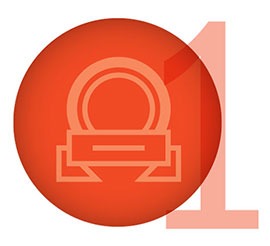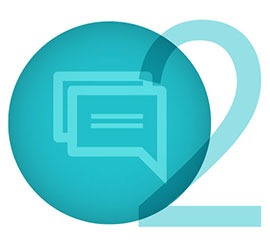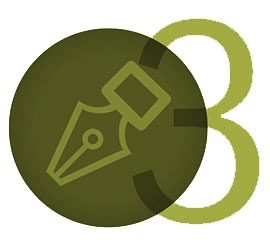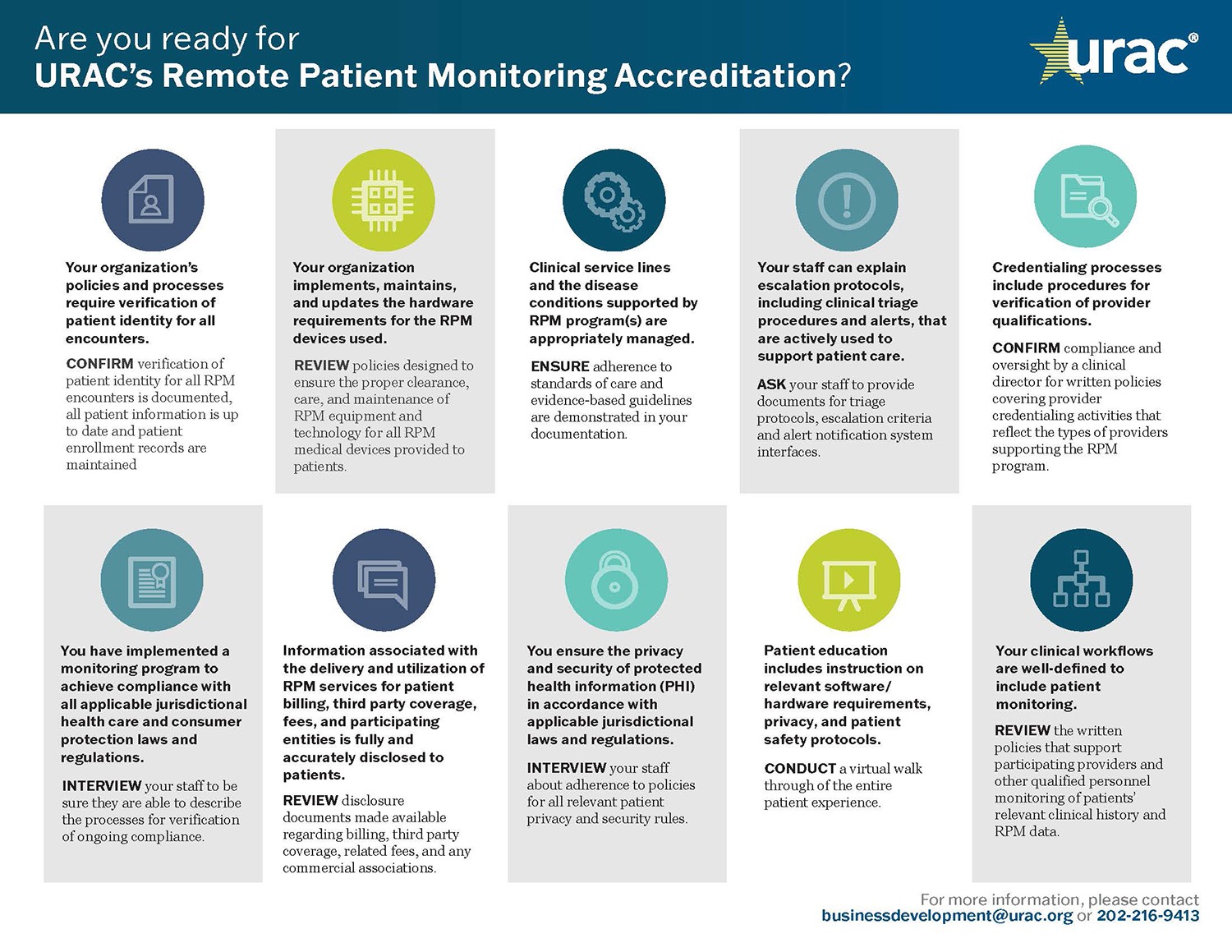Quick Links
Remote Patient Monitoring Accreditation Overview
The use of Remote Patient Monitoring (RPM) has skyrocketed as a way to help manage the health of individuals with chronic conditions while allowing them to stay safely at home. Many health conditions can be managed through RPM and remote physiologic monitoring, including diabetes, hypertension, congestive heart failure and even dementia. RPM uses technology to collect and transmit patient-generated health data and can work to support care management programs targeting populations or diagnoses.
RPM allows clinicians to track and manage data and can work to reduce complications and hospital readmissions. RPM puts patients at the center of their own care for better outcomes. It’s no surprise RPM usage has grown so quickly.
But with the broad use and rapid growth of RPM technologies comes the need for standards that serve as guardrails. How do patients, payers and clinical care teams know that the monitoring services they use are effective, safe, evidence-based and secure? That’s where URAC Remote Patient Monitoring Accreditation comes in – it allows organizations to demonstrate their excellence in technology-enhanced patient care management.
Although the U.S. Food and Drug Administration certifies RPM devices, and several standards-setting bodies have developed security and related requirements, URAC’s Remote Patient Monitoring Accreditation Program is the first comprehensive set of standards created to assess many key aspects of an RPM program.
Once you begin the process, your organization can be fully accredited in six months or less.
Accreditation Process: What to Expect
At URAC, our accreditation process is more than collecting metrics and checking boxes. URAC offers your organization a collaborative, comprehensive learning experience designed to enhance knowledge and promote quality practices.
The program helps highlight the work your organization already does to support virtual tracking and monitoring of patient data.
Who May Apply
To be eligible for URAC’s Remote Patient Monitoring Accreditation, an organization must collect patient health data and transmit it to providers for assessment and monitoring via digital technology. Organizations must be operating in the U.S. Download our Remote Patient Monitoring Standards-at-a-Glance for more information.
URAC’s Remote Patient Monitoring Accreditation Program is available to a wide range of organizations, including providers (e.g., physicians, nurses, hospital systems), health plans, specialty care organizations and telehealth providers.
If your organization engages in virtual care encounters between the provider and the patient, URAC's Telehealth Accreditation Program may be right for you.






